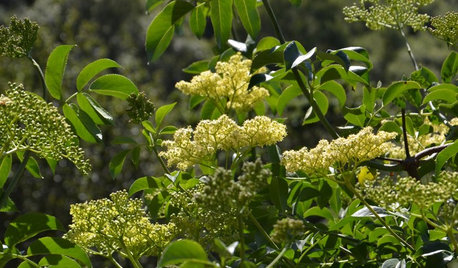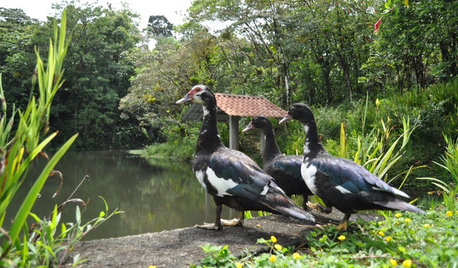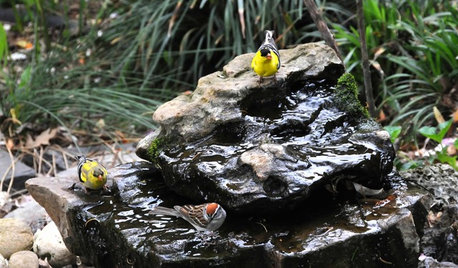Need Help/Inspiration for Bird Garden
chickadeemelrose
14 years ago
Related Stories

EARTH DAYHow to Help Your Town’s Beneficial Birds and Bugs
Make a habitat using local materials to provide a home to the creatures that help our gardens
Full Story
GARDENING FOR BIRDSWild Birds Transform a Woman’s Garden and Life
How Sharon Sorenson created a wildlife haven and became the Bird Lady of Southern Indiana
Full Story
GARDENING FOR BUTTERFLIESBring on the Birds: Natural Habitat Ideas for Gardens of All Sizes
Provide nesting, watering and perching spots inspired by the Costa Rican jungle and watch the birds flock on over
Full Story
GARDENING AND LANDSCAPINGBe a Citizen Scientist to Help Wildlife, Learn and Have Fun Too
Track butterflies, study birds, capture stars ... when you aid monitoring efforts, you’re lending Mother Nature a hand
Full Story
LANDSCAPE DESIGNNative Plants Help You Find Your Garden Style
Imagine the garden of your dreams designed with plants indigenous to your region
Full Story
GARDENING GUIDESGreat Design Plant: Sambucus Nigra Caerulea for the Birds
Blue elderberry is a favorite of birds and other wildlife in its native California
Full Story
STANDARD MEASUREMENTSThe Right Dimensions for Your Porch
Depth, width, proportion and detailing all contribute to the comfort and functionality of this transitional space
Full Story
GARDENING GUIDESBackyard Birds: Northern Cardinals in the Snow, and Other Red Birds
Brilliant crimson feathers make these friends stand out in a crowd
Full Story
LIFEYou Said It: ‘The Birds Will Thank You’ and More Houzz Quotables
Design advice, inspiration and observations that struck a chord this week
Full Story
OUTDOOR PROJECTSBring In the Birds With a Homemade Bubble Rock
An avian expert from Southern Indiana shows how to make a burbling fountain that migrating birds will love
Full Story





maifleur01
chickadeemelroseOriginal Author
Related Professionals
Saint Louis Park Landscape Architects & Landscape Designers · East Patchogue Landscape Architects & Landscape Designers · Goodyear Landscape Contractors · Burlington Landscape Contractors · Cudahy Landscape Contractors · Galveston Landscape Contractors · Mesa Landscape Contractors · Miller Place Landscape Contractors · Soddy Daisy Landscape Contractors · Goldenrod Landscape Contractors · Casselberry Landscape Contractors · North Hills Landscape Contractors · Clearfield Landscape Contractors · Des Plaines Driveway Installation & Maintenance · Rockwall Swimming Pool Buildersmarlingardener
birding_nut
chickadeemelroseOriginal Author
terrene
chickadeemelroseOriginal Author
chickadeemelroseOriginal Author
terrene
maifleur01
cyn427 (z. 7, N. VA)
chickadeemelroseOriginal Author
nativesnut
chickadeemelroseOriginal Author
Pat z6 MI
alyciaadamo
dennisgli
chickadeemelroseOriginal Author
cyn427 (z. 7, N. VA)
dennisgli